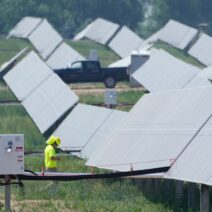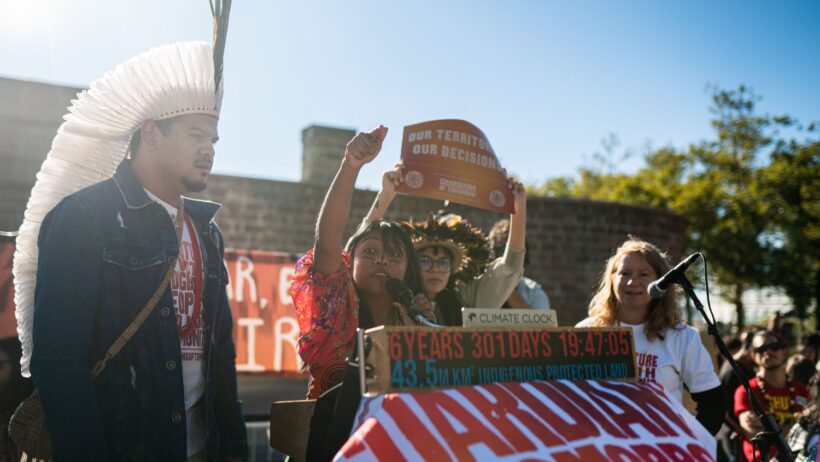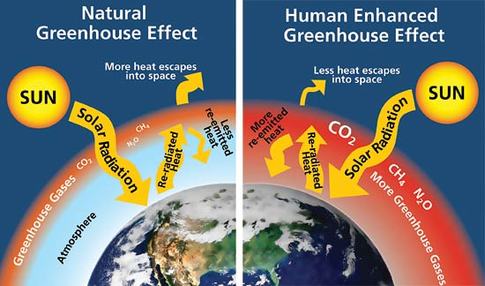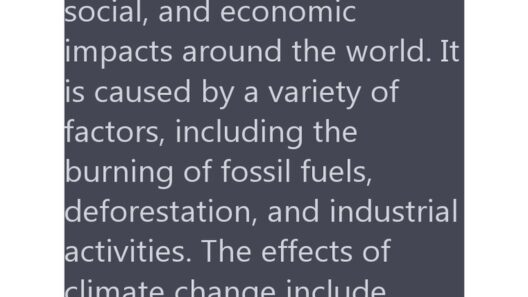The Climate Clock is more than just a striking visual; it is a poignant warning regarding the urgent need for action in the face of climate change. Have you ever considered how many hours, days, or even seconds remain until we reach a critical threshold in global warming? How many of us truly grasp the implications of a countdown that evokes both curiosity and concern? This engaging question compels us to confront the reality of our situation while also challenging us to respond actively to the impending crisis.
At its core, the Climate Clock symbolizes the limited timeframe we have to mitigate the most devastating effects of climate change. The concept emerged from a simple yet profound calculation based on the Paris Agreement’s goal to limit global temperature rise to 1.5 degrees Celsius above pre-industrial levels. Scientists have established that reaching this threshold will precipitate irrevocable changes to our planet. The clock serves as a visual representation of the urgency required to reduce greenhouse gas emissions and transition towards sustainable practices.
The mechanics of the Climate Clock hinge on a multitude of factors, primarily greenhouse gas emissions. As countries around the globe continue to emit carbon dioxide, methane, and other pollutants, the clock ticks down, a constant reminder of our collective responsibility. Are governments doing enough? Are industries taking the necessary steps toward sustainability? As we ponder these questions, the clock continues to count down, an ever-pressing necessity for both awareness and actionable response.
Yet, this countdown is not merely a harbinger of doom. It is also an invitation—a call to arms for individuals, communities, and nations. For example, renewable energy has become increasingly accessible, and its adoption presents a viable alternative to fossil fuels. Wind, solar, and hydroelectric power are not just buzzwords; they represent the potential for a transformative change in our energy consumption patterns. By changing our sources of power, we can effectively stave off the crisis. Are we willing to embrace this alternative?
As one examines the implications of the Climate Clock, it raises several key considerations. Firstly, the notion of climate justice must be addressed. The adverse effects of climate change disproportionately affect marginalized communities and developing nations that are least responsible for the emissions contributing to global warming. This disparity begs the question: How can we forge a path toward equity in our climate solutions? Without conscientious efforts to include all voices in the conversation, we risk exacerbating existing inequalities.
Secondly, educational initiatives play a pivotal role in raising awareness and fostering an understanding of the climate crisis. Informing youth about the gravity of climate change can create a generation of passionate advocates willing to challenge the status quo. Furthermore, educational outreach can galvanize individuals to make informed choices in their own lives—becoming more mindful consumers or supporting sustainable practices. Will schools embrace this responsibility to empower future leaders?
Another point of reflection centers around technological advancements. Innovations in carbon capture, energy efficiency, and clean transportation have the potential to revolutionize our approach to mitigating climate change. Yet, technology alone cannot solve the crisis; it must be coupled with systemic change. A groundswell of societal demand can encourage policymakers to implement robust climate regulations. Are we prepared to hold our leaders accountable for implementing transformative policies that align with scientific consensus?
Moreover, the role of community engagement cannot be understated. Grassroots movements have sparked considerable change, mobilizing citizens to advocate for more stringent climate policies. Local initiatives, such as tree planting and community gardens, can foster a sense of agency and invest individuals in the solution. The question arises: What community-oriented projects can proliferate in your area to make a tangible difference?
As the clock continues to tick, it becomes increasingly apparent that time is not merely a measure of minutes and hours; it represents the opportunity for introspection and change. Each tick denotes a moment in which we could forge a more sustainable future. We can transform despair into hope, paralysis into action. How often do we let pass the chance to make our voices heard, to advocate for our planet in meaningful ways?
Perhaps the most significant aspect of the Climate Clock is its ability to mobilize individuals and communities worldwide to come together. It holds the power to bridge divides, foster alliances, and inspire a collective movement. When people unite under a shared cause, transformative change becomes possible. Can we remember that we are all part of the same ecosystem and that our actions, no matter how small, contribute to the greater good?
In conclusion, the Climate Clock serves as a powerful reminder of our time-limited opportunity to act against a warming world. It challenges us with both a playful inquiry and a solemn responsibility. The countdown underscores an urgency that transcends borders, ideologies, and individual silos. As we ponder our role in the future of our planet, let us commit ourselves to making every second count. The clock is ticking—what will you do in the time remaining?







